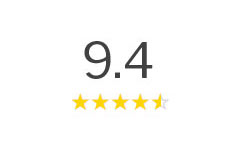 |
 |
|---|
|
|
|---|
 |
 |
 |
 |
|---|---|---|---|
 |
 |
 |
|
 |
|||
 |
 |
 |
|
 |
|||
 |
 |
 |
|
 |
|||

|
io5c874yfja How to Find a Divorce Date: Navigating the MazeIn today’s fast-paced world, information is at our fingertips, yet some details, like the date of a divorce, can seem elusive. Whether you need this information for personal reasons, legal matters, or genealogical research, knowing where to look is essential. Let’s delve into various approaches to uncover this critical date, each with its own nuances and benefits. 1. Official Court Records The most straightforward method is to access official court records. Divorce proceedings are public records, and the final decree typically contains the divorce date. Start by identifying the county or district court where the divorce was filed. Most jurisdictions allow you to request records online, though some might require an in-person visit. It's worth noting that while accessing these records is a reliable method, it might involve fees or, in some cases, a waiting period. 2. Vital Records Offices Another avenue is the vital records office in the state where the divorce was finalized. These offices maintain divorce certificates, which are less detailed than full court records but include the essential divorce date. The process here can be more streamlined compared to court records, and some states offer online databases. However, access might be restricted to the parties involved or their legal representatives, so be prepared to demonstrate your connection or need for the information. 3. Online Public Records Databases For those who prefer the comfort of their home, online public records databases offer a convenient option. Websites like Ancestry.com or specialized services like TruthFinder compile data from various sources, including court records. While these platforms might charge for their services, they provide an extensive range of information beyond just divorce dates. However, be cautious of outdated or inaccurate data, as these services rely on the availability and quality of public records. 4. Newspapers and Public Notices If you enjoy a bit of detective work, historical newspapers and public notices can be a goldmine. Many newspapers archive public notices, including divorce announcements, which might specify the date. This method is particularly useful for older records, but it requires patience and sometimes, a subscription to a newspaper archive service. 5. Family Records and Conversations Lastly, never underestimate the power of family lore and records. Conversations with family members or a peek into old family documents might yield the divorce date. Personal records such as diaries, letters, or photo albums can provide clues. While this method depends heavily on the willingness and memory of relatives, it adds a personal touch to your search. In conclusion, finding a divorce date involves a blend of technology, patience, and sometimes, a bit of legwork. Each method has its strengths and potential pitfalls, and the best choice often depends on your specific circumstances and resources. Whether you opt for the efficiency of online databases or the personal touch of family records, the key is persistence. The journey to uncover this date might be as enlightening as the information itself, offering insights into legal processes, family histories, and the digital age's impact on record-keeping. https://www.familysearch.org/en/wiki/United_States_Divorce_Records
Divorce records are often open to the public and can be obtained by contacting the clerk of the court. Background. Divorces before the twentieth ... https://www.kdhe.ks.gov/1195/Divorce-Certificate
The divorce certificate is completed by the plaintiff's attorney and contains only basic information - names of both parties, date of marriage, date of divorce ... https://www.wikihow.com/Find-Divorce-Records
To access the full divorce decree, you'll need to contact the state or county's Vital Statistics office, fill out a form, and pay of fee of around $20. It could ...
|
|---|